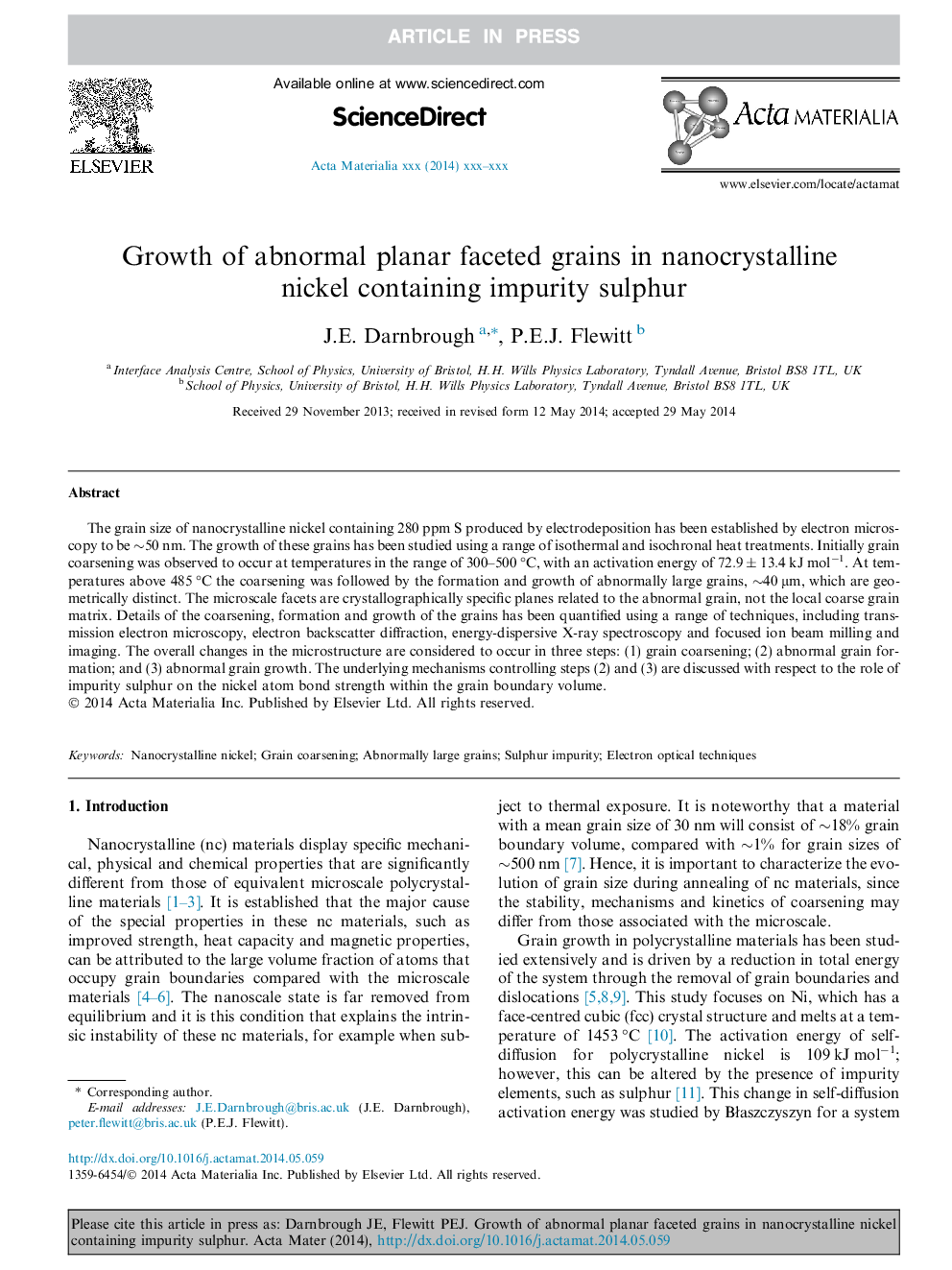| Article ID | Journal | Published Year | Pages | File Type |
|---|---|---|---|---|
| 7881261 | Acta Materialia | 2014 | 13 Pages |
Abstract
The grain size of nanocrystalline nickel containing 280 ppm S produced by electrodeposition has been established by electron microscopy to be â¼50 nm. The growth of these grains has been studied using a range of isothermal and isochronal heat treatments. Initially grain coarsening was observed to occur at temperatures in the range of 300-500 °C, with an activation energy of 72.9±13.4 kJ molâ1. At temperatures above 485 °C the coarsening was followed by the formation and growth of abnormally large grains, â¼40 μm, which are geometrically distinct. The microscale facets are crystallographically specific planes related to the abnormal grain, not the local coarse grain matrix. Details of the coarsening, formation and growth of the grains has been quantified using a range of techniques, including transmission electron microscopy, electron backscatter diffraction, energy-dispersive X-ray spectroscopy and focused ion beam milling and imaging. The overall changes in the microstructure are considered to occur in three steps: (1) grain coarsening; (2) abnormal grain formation; and (3) abnormal grain growth. The underlying mechanisms controlling steps (2) and (3) are discussed with respect to the role of impurity sulphur on the nickel atom bond strength within the grain boundary volume.
Related Topics
Physical Sciences and Engineering
Materials Science
Ceramics and Composites
Authors
J.E. Darnbrough, P.E.J. Flewitt,
